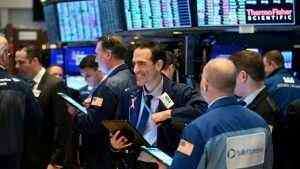
If you are a skillful trader then you can make money during that intra day otherwise the chances are high to lose money as well. Both methods have proven to work over time, provided you stick to the strategy you develop and overcome any emotions you may experience while trading or investing. If you don’t desire to trade daily, but enjoy a “set and forget” mentality, investing might work better for you. You should be very patient and be able to stick to your plan throughout market downturns. We reviewed providers to find the best online platforms for day trading.
What is stock market volatility? – IG UK
What is stock market volatility?.
Posted: Thu, 31 Aug 2023 11:19:55 GMT [source]
When discussing trading vs. investing, one isn’t necessarily better than the other. When approached with the right strategy and knowledge, either one could help you to achieve your goals. It’s also important to remember that you don’t have to commit to just one or the other. Timeline isn’t the only difference between trading and investing. The other day, when talking with one of my trading buddies, we posted this question. The answers we came up were a little surprising, perhaps even counter-intuitive.
Trading vs. long-term investing
That extra income could come in handy during retirement, when many retirees live on a fixed income and need all the cash they can get. All indexes are unmanaged and an individual cannot invest directly in an index. The biggest downside of long-term investing is the fear of missing out (FOMO). If you’re casually picking stocks or reading about the growth of Bitcoin, it’s tempting to think ‘if only I…’. It’s about making a plan, sticking to it, and taking on only as much investment risk necessary to reach your goals. Wash sales can be difficult to track at some brokerage firms like Robinhood.
The offers that appear on this site are from companies that compensate us. But this compensation does not influence the information we publish, EverFX or the reviews that you see on this site. We do not include the universe of companies or financial offers that may be available to you.
Just keep in mind that it’s hard to build a diversified portfolio by buying stocks of individual companies. Investing involves putting money into a financial asset (stocks, bonds, mutual or exchange-traded fund, etc). Investors generally have a long time horizon and predominantly look to build wealth through gradual appreciation and compound interest rather than short-term gains. Whether it makes sense to focus on trading or investing ultimately depends on your investment style, risk tolerance and goals. If you’re interested in generating immediate returns and you’re comfortable taking more risks then you could be suited to trading stocks rather than investing.
Risk disclosures on derivatives –
The prospect of making a bucketload of money as a trader is an appealing one, no doubt. But before you start sending your money in that direction, take stock of where you’re at. In the world of investing, everybody is a trader and an investor. However, like with gambling, it can also quickly lead to big losses. Investing usually means smaller short-term wins, but also fewer severe losses. Investors often enhance their profits by compounding or reinvesting any profits and dividends into additional shares of stock.

You can also choose to be a bit of both, using some money to trade and other money to invest. We do not manage client funds or hold custody of assets, we help users connect with relevant financial advisors. Options trading entails significant risk and is not appropriate for all investors. Before trading options, please read Characteristics and Risks of Standardized Options. Supporting documentation for any claims, if applicable, will be furnished upon request.
You’re our first priority.Every time.
In most cases, the trading vs. investing shouldn’t be a binary decision. Spread bets and CFDs are complex instruments and come with a high risk of losing money rapidly due to leverage. 71% of retail investor accounts lose money when spread betting and/or trading CFDs with this provider. You should consider whether you understand how spread bets and CFDs work and whether you can afford to take the high risk of losing your money.
Solid trading strategies can contribute to long-term investing, but trading certainly doesn’t define an investing strategy – it’s just a component. In most instances, however, a stock is traded to capitalize on short-term market conditions, usually to pick up a stock that’s undervalued and flip it for a quick profit. To start trading, open a demo account to get used to our trading platform and placing https://investmentsanalysis.info/ trades. Our risk-free demo account allows you to practise trading with £10,000 of virtual funds. Once comfortable, you can transition to a live account to start placing trades with real money. Alternative investments such as art, collectibles, private equity, and venture capital offer unique opportunities for investors but often require a higher degree of expertise and come with higher fees and risks.
- Other factors, such as our own proprietary website rules and whether a product is offered in your area or at your self-selected credit score range can also impact how and where products appear on this site.
- However, they may not offer significant returns and can be subject to market fluctuations.
- Diversified funds, meanwhile, spread your money across hundreds of companies.
It involves the exchange of these assets between buyers and sellers in various markets, such as stock exchanges or electronic trading platforms. Traders aim to take advantage of price fluctuations in the market by executing trades at opportune moments. Trading is often driven by immediate emotions such as fear, greed and the desire for quick profits, as traders are exposed to rapid market changes and the pressure to make timely decisions. The short-term nature of trading can intensify emotional reactions to market volatility, leading to impulsive actions. Successful investing involves managing emotions such as fear and panic during market downturns and maintaining discipline and patience to stay committed to long-term goals.
Differences between trading and investing
Long-term investing and trading are two different methods for approaching your ultimate financial goal. Whichever strategy you use depends on whether you like to get into the day-to-day (or even minute-to-minute) ups and downs of the market or prefer to ride those long-term fluctuations — neither is right or wrong! As long as you have a goal in mind, plan in place, and the patience to get there, you can use trading, investing, or a mix of both to make the most of your portfolio strategy. Keep in mind, annual returns fluctuate and there is no guarantee you will generate a positive return every year. While one year you may receive a 7% return, you very well could experience a negative return the following year, due to market volatility.
In investing, short-term gains and losses are ignored for long-term gains, which are achieved as the company grows. A trader will concentrate on the perceived market value of the stock. He or she would not be interested in the financial health of the underlying company. An investor though would be thoroughly interested in the company’s financial performance more than the share’s trends. Trading offers the potential for high returns but also carries higher risks than investing.
Risk/reward profile
Day traders buy and sell securities within the same trading day, often holding positions for just a few minutes or hours. They rely on technical analysis, news events, and market trends to make quick trades and profit from short-term price movements. Mindset is another major difference between trading and investing.
For instance, if you had the same $7 fee for $100 of stock, it would still be 7% of your capital. Your $100 stock would still need a 14% return to cover the transaction fees, but you have much more time to earn the amount than with a day trade. The investing information provided on this page is for educational purposes only. NerdWallet, Inc. does not offer advisory or brokerage services, nor does it recommend or advise investors to buy or sell particular stocks, securities or other investments. Stock trading is a sophisticated art of finding short-term mispricings in the market prices and capitalizing on them.
- By avoiding emotional investing and keeping your eyes ahead, you can ride out short-term ups and downs and potentially take advantage of the market’s historically upward trajectory.
- She’s been a financial coach and certified consumer credit counselor, and is working on becoming a Certified Financial Planner.
- Tax implications
Almost anytime you earn a profit, Uncle Sam wants his cut. - Now that you know how traders approach time, activity, and risk, let’s look at how investors do.
Swing trading is somewhat profitable when compared to day trading. You can buy shares whenever they are available for a cheap price and you can make profits whenever their price increases. The key is knowing how much you can make compared to how much you can lose.
How We Make Money
Options, trading on margin, or short selling are all ways of leveraging. Time and effort
Because of the amount of research and transactions it takes, successful trading can be—and often is—a full-time job. Long-term investing, meanwhile, most often takes a set-it-and-forget-it mentality. By buying a diversified fund or mix of investments, investors may be able to benefit from the historic long-term returns of the stock market with little effort. Of course, there are times when a better trader may make way more trades than a newbie. Multiple Time Frame Analysis, MTF, means using a longer time frame chart such as daily or hourly to pinpoint a signal and then switching to a shorter time frame chart for entries.
However, it also takes a strong desire to make money on trades and a solid risk management strategy. However, investing requires long time frames that can induce losses if you’re not able to hold a security through a lengthy downturn. Any given year could see returns much higher or lower than 10% (with negative returns occurring about one out of every four years).

